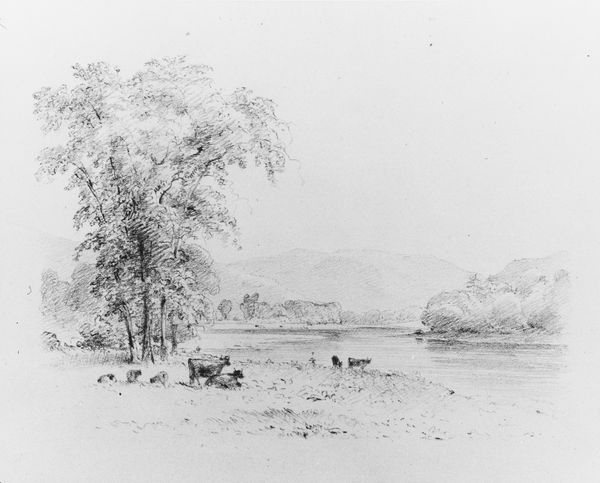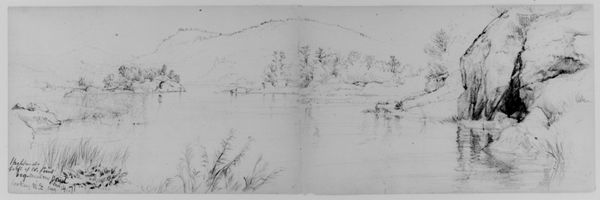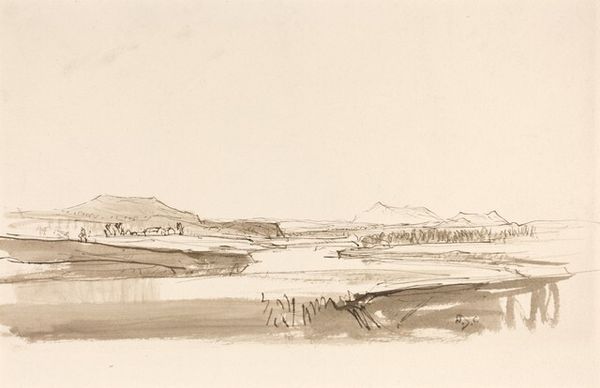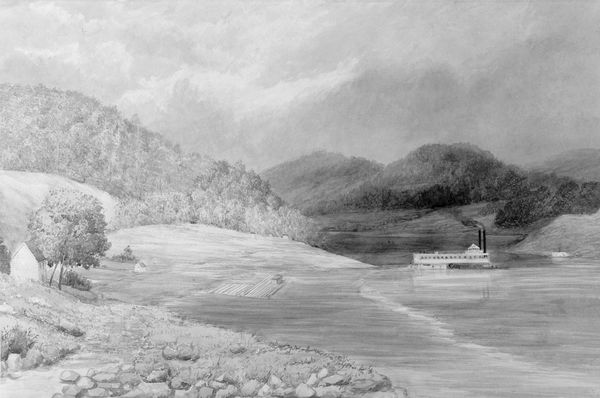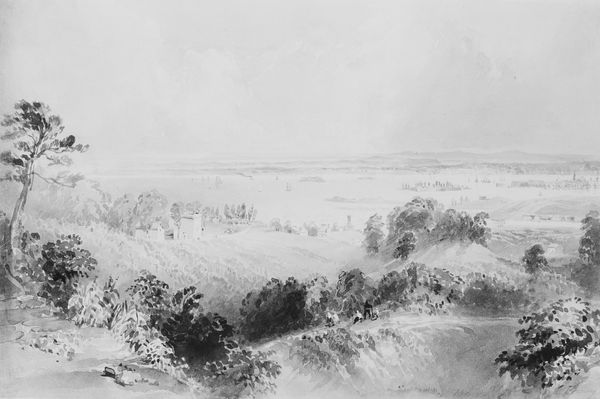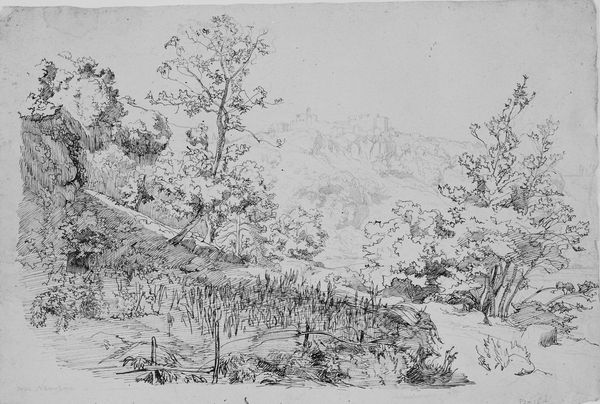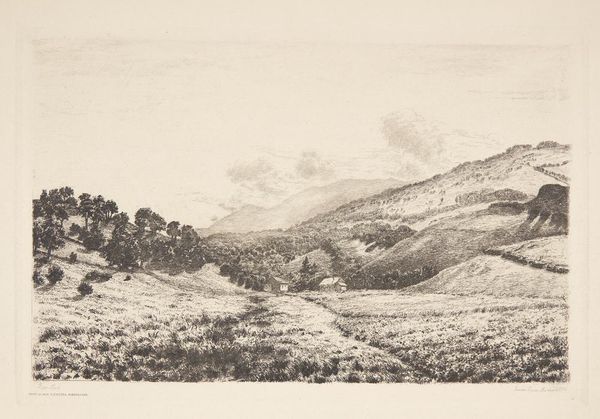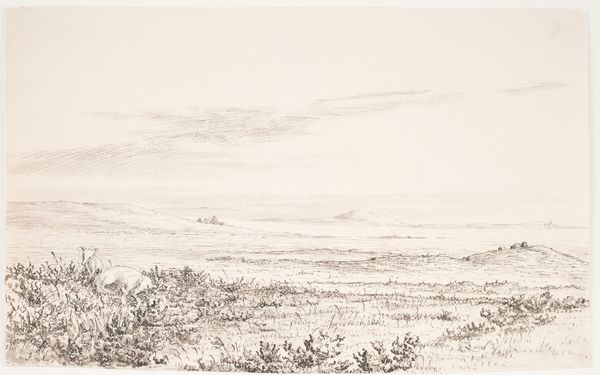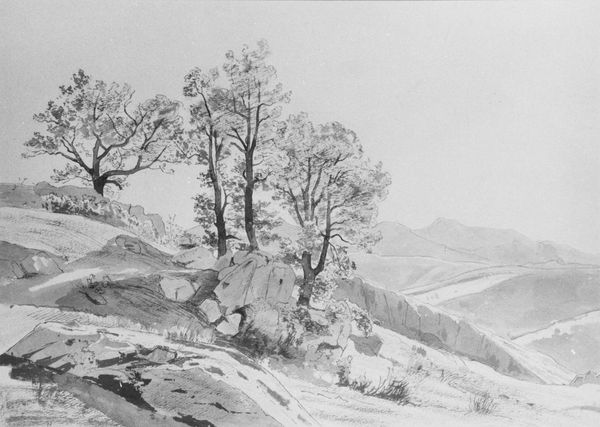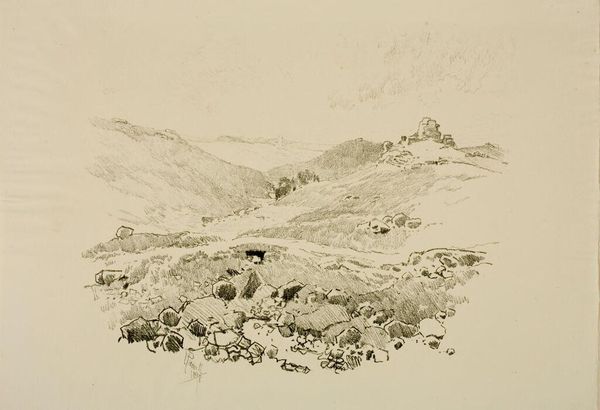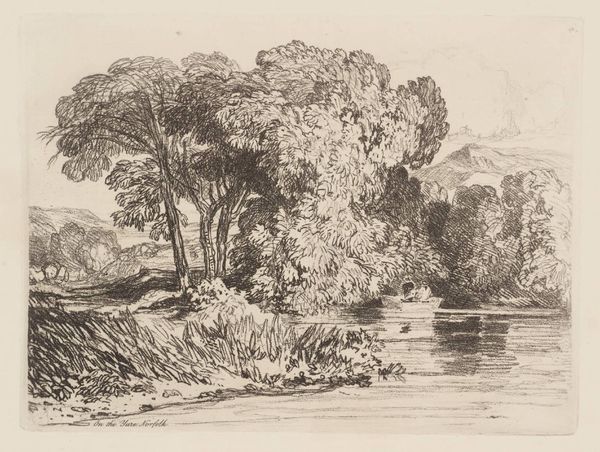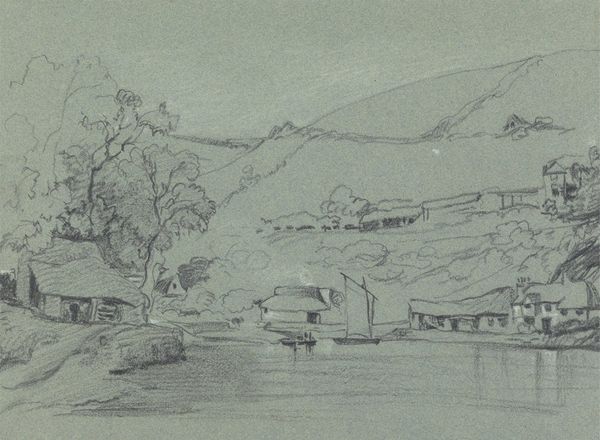
Nanticoke, Pennsylvania (The Susquehanna at Nanticoke) 1852
0:00
0:00
drawing, pencil
#
drawing
#
landscape
#
pencil
#
hudson-river-school
#
realism
Dimensions: 5 1/2 x 8 1/2 in. (14 x 21.6 cm)
Copyright: Public Domain
Curator: It feels like a dream. There’s something about the soft rendering that evokes a tranquil, almost ethereal quality. Editor: Indeed. We're looking at "Nanticoke, Pennsylvania (The Susquehanna at Nanticoke)" created around 1852 by Thomas Addison Richards. Currently in the collection of the Metropolitan Museum of Art, this piece uses a medium as simple as pencil on paper to capture a sweeping vista. Curator: Pencil, yes, but look at the layers. The way he builds up tone. It is more than just a record of a place; it’s an evocation of serenity, isn't it? Water as a mirror, land receding, nature dominant, and humans as tiny element within a great sublime whole... it reminds me of the old quest narratives. Editor: Absolutely. The choice of such a readily available, almost democratic, medium speaks to the rise of landscape art in Antebellum America. Artists were striving to connect with a growing audience interested in the nation's natural wonders, albeit also involved in a relentless, westward, often destructive expansion. Curator: It speaks volumes doesn’t it? The Susquehanna wasn’t merely a river, it was a channel, an artery that carried dreams and sometimes carried nightmares. Water, in its symbolic depth, hints to journeys into the self... even death. Look at the lone figure drifting down. Where are they going? What were the associated values? Editor: Considering the Hudson River School connection, you also get a sense of the developing national identity, this romantic idea of America as an unspoiled Eden. While it often served nationalistic agendas and supported ideas of Manifest Destiny, the imagery offered also a subtle form of visual resistance. Curator: Perhaps this tranquil vision also attempts to purify a reality already scarred by injustice and dispossession, making the picture into an imagined world that covers past sins. But still, there’s that enduring human need to find solace in the face of vast nature, maybe? Editor: It's a tension, for sure, a dance between glorification and perhaps, unconscious commentary. Thanks to the artist's skillful rendering, viewers today continue reflecting on the layered meaning of the cultural narrative and nature itself. Curator: I think my first impression, even after this brief consideration, holds: it's a beautiful invitation to slow down and feel connected, on many different levels. Editor: Agreed. There is such enduring power in seeing art through diverse, yet interconnected lenses.
Comments
No comments
Be the first to comment and join the conversation on the ultimate creative platform.
